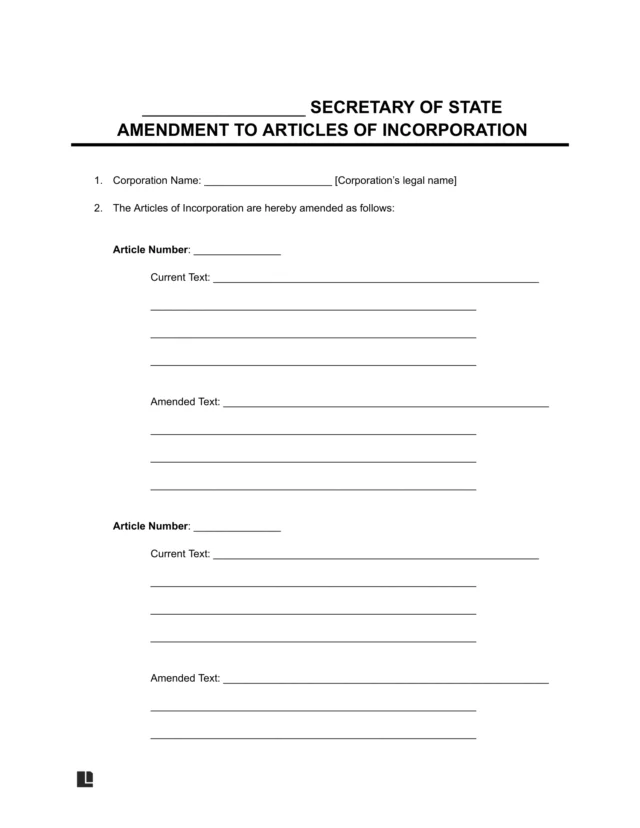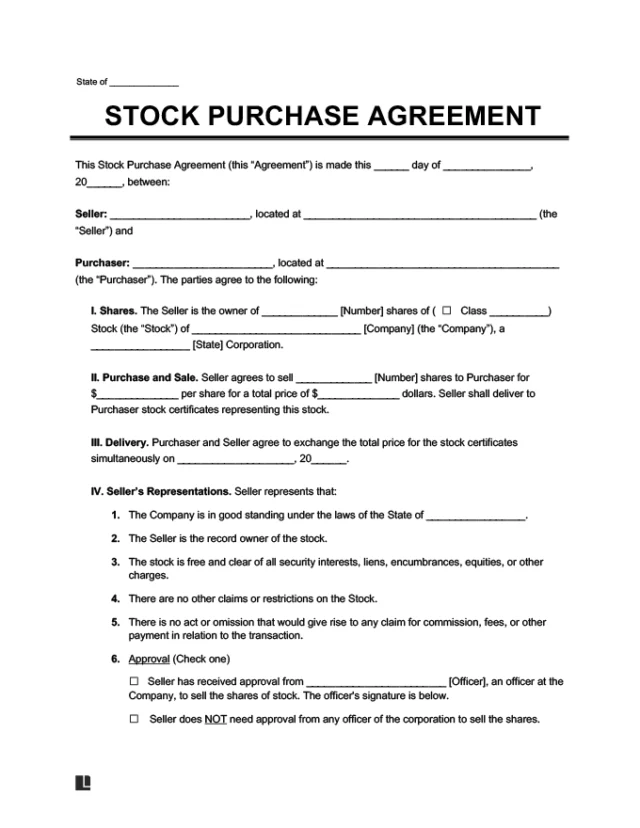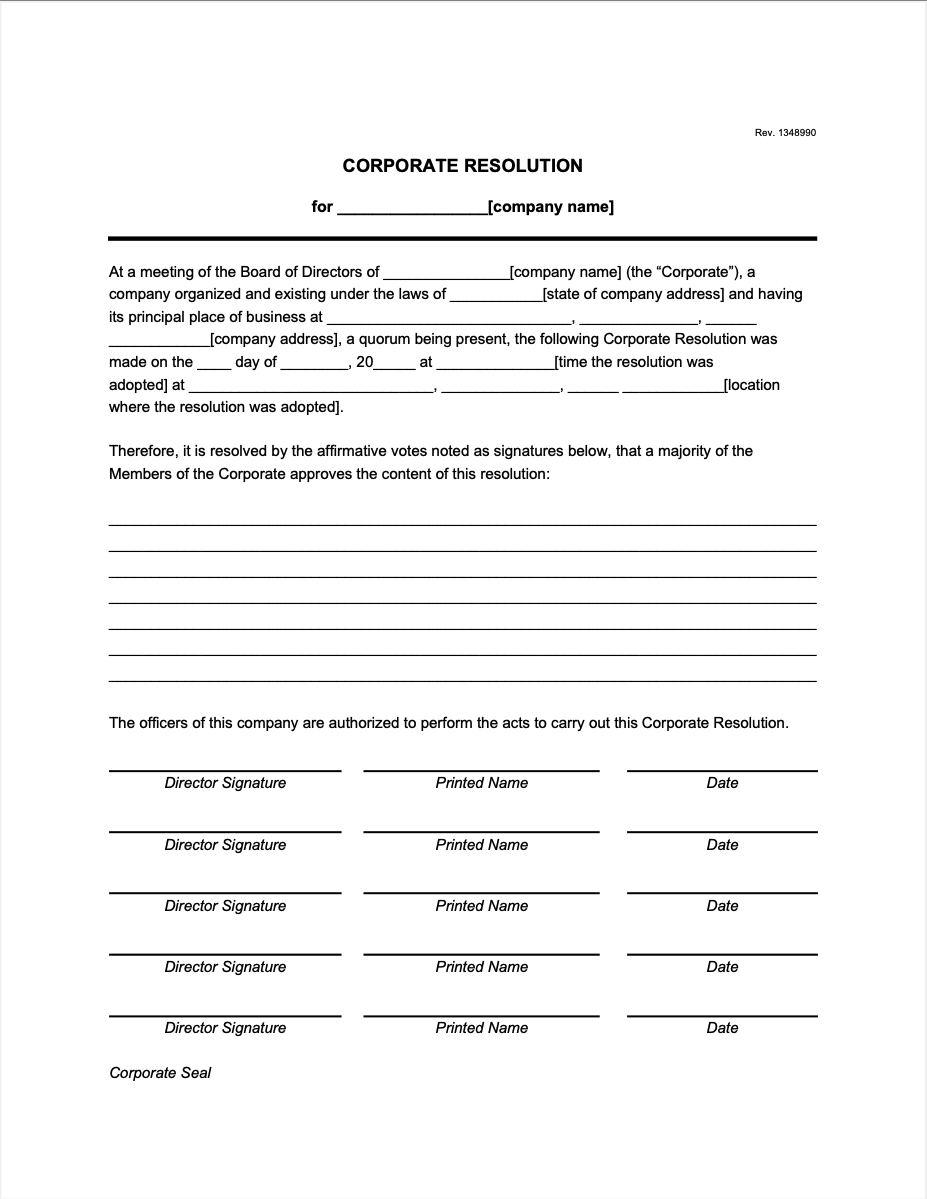What Is a Corporate Resolution?
A corporate resolution is a written record of a significant decision by a company. It outlines what the shareholders or the board of directors decided. Looking back, it shows that the company had the authority to make that decision.
This document usually remains internal, but it can be useful if the IRS audits your business. Even if the IRS doesn’t review your company’s records, a resolution promotes transparency. It also shows that decisions are made on the company’s behalf, limiting personal liability.
Third parties may ask to see a corporate resolution to approve transactions. For example, a bank may require proof of a decision before issuing a loan.
Corporate resolutions are typically for corporations, including S-Corps and C-Corps. However, Legal Templates’s form also lets LLCs record their company decisions.
Is a Corporate Resolution the Same as the Articles of Incorporation?
No. Articles of incorporation establishthe corporation and are filed with the Secretary of State or equivalent office. Corporate resolutions record major actions and decisions after the company is formed.
When Is a Corporate Resolution Required?
Corporate resolutions summarize major corporate actions. They’re not used for recording the outcomes of or approval for day-to-day activities. Here are some instances where it can be helpful to have a corporate resolution document:
- Opening a new corporate bank account
- Transferring business ownership
- Hiring a new employee
- Voting for a new board member
- Selling shares of stock
- Designating corporate officers
- Setting up a new location or place of business
- Adopting large marketing campaigns
- Taking out a loan
- Entering a business contract
You should use a corporate resolution in any instance required by the corporate bylaws.
How to Write a Corporate Resolution
Writing a corporate resolution can help you memorialize important company decisions and capture all the essential details. Below, you can learn how to write a corporate resolution using Legal Templates’s form.
Step 1 – Provide Company Information
Write your company information, including its name and address. Specify whether it operates as an LLC or a corporation.
Step 2 – Give a Resolution Statement
Write your company’s statement of resolutions, noting the action that was decided. You can write multiple statements on the same corporate resolution template if applicable. Some examples of resolutions include the following:
It is resolved that [Name of Bank] is authorized to establish a bank account in the name of [Company Name], and that [Authorized Person] is hereby authorized to sign on behalf of the company.
It is resolved that the company is authorized to purchase the property located at [Address], and that [Authorized Person] is authorized to sign all documents necessary to complete the transaction.
It is resolved that the company shall issue [Number] shares of stock to [Name] in exchange for [Payment Amount].
Step 3 – State the Location & Date of the Resolution
Record the date and time that your company adopted the resolution. Include the address where the decision was made so your company has a complete record of the changes made.
Step 4 – Name the Involved Personnel
To solidify any decision at a corporate meeting, a quorum is typically required, which is a minimum number of board members who should be present. To meet the quorum, list all of the board members who adopted the resolution.
You should also list the secretary appointed to record the decision. The secretary should acknowledge and sign the Certificate of Secretary, which verifies that the record is true and accurate.
Finalize your resolution form by collecting signatures from all of the board members.
Does a Corporate Resolution Form Need to Be Notarized?
Notarization is typically not needed for a corporate resolution. However, it’s highly recommended (and sometimes required), especially when submitting to a financial institution or government agency. Notarization adds a layer of legitimacy, confirming the identities of the signers.
Sample Corporate Resolution
If you’re wondering what a corporate resolution form looks like, you can view a free sample below to get an idea of the elements to include. Summarize your company’s major decisions using our guided questionnaire. Download the final form in PDF or Word format.








